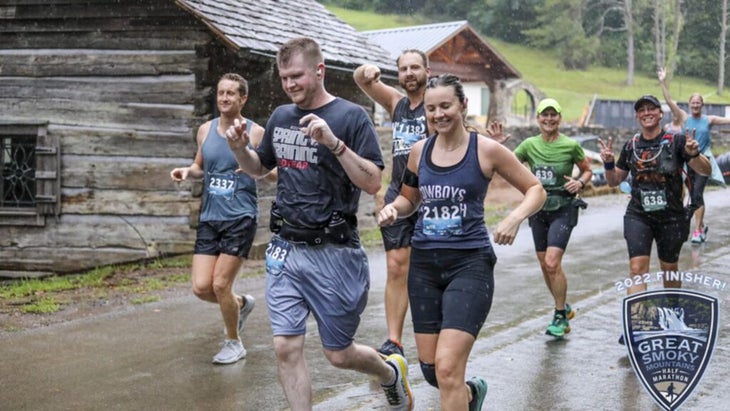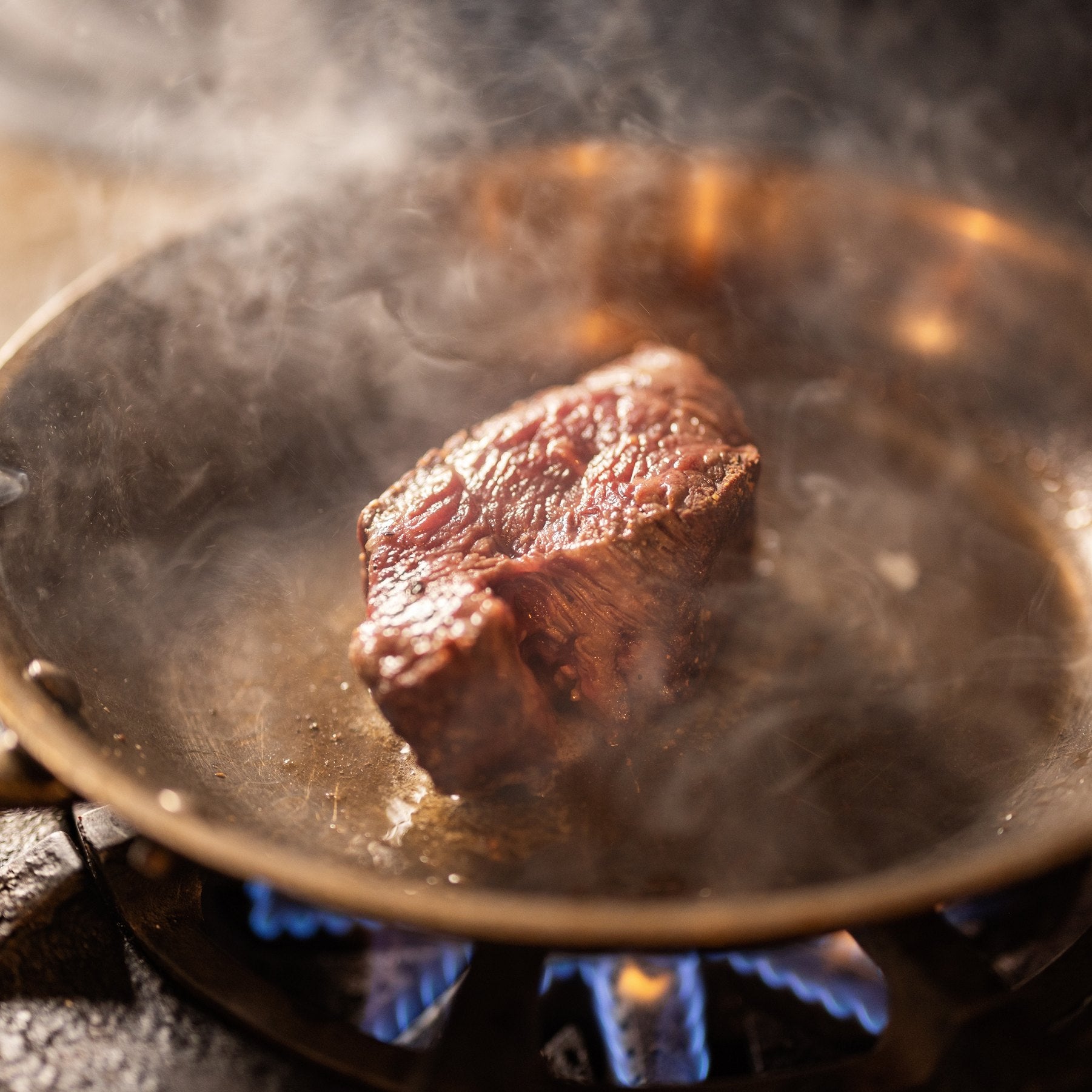First thing’s first: I’m a long distance runner. My favorite race is the marathon, and it’s almost always on my mind. I’m never not training for a race, and spend every other day putting in daily runs. Sundays, of course, are for long runs ranging from 10 to 18 miles. Those are my personal favorite.
But at the beginning of 2022, I hated Sundays. Because every Sunday afternoon, I woke up face down on the floor of my apartment with my running shoes still on, half-eaten energy bar in hand, and my cat perched on my butt. This was the norm.
As an editor at ���ϳԹ��� magazine, I’m constantly surrounded by impressive people. My coworkers are experts in their fields and impressive athletes proficient in outdoor adventures from climbing to skiing. So being among such a spectacular group of people made it all the more difficult to admit that I was struggling in my own endeavors. My problem? Instead of feeling rejuvenated and fresh after a Sunday long run, I would pass out on the floor and wake up with a massive post-run hangover. I was having difficulty building leg muscle in the gym which led to some injuries. After a marathon in Irving, Texas, I was down for the count with a pulled hamstring that led to endure six weeks of physical therapy.
My running coach at the time asked me a question that hadn’t crossed my mind in eight years:
“Would you consider trying meat again?”
Who knew eating chicken or beef would shake me in my Asics more than running 26.2 miles. Not because of a phobia of chickens or anything (that would be Alektorphobia, btw) but because I’d been a dedicated vegetarian for eight years.
I’d never so much as purchased meat at a grocery store. Nevermind that it all looks the same, but how did one decipher the difference between chicken breast and chicken thighs? There were no cooking instructions on the back of the packaging – I checked. Why couldn’t it have been like a box of macaroni and cheese? Step one, step two, step three. Instead it’s, ‘Here’s a hunk of pink stuff. Do your best.’
After the thought marinated in my head for a while (much like meat should be prepared, according to the internet), I put on a baggy sweatshirt, pulled my hood up, and made inconspicuous passes by the meat section of my grocery store. There was something humiliating about breaking my vegetarianism, like even the strangers watching me from the cereal aisle could see I was a phony.
I loved being plant-based. My running idol (besides my own father – hi, Dad) is the one and only Scott Jurek, and he’s vegan. And there are plenty of things I owe to my vegetarianism. First, my awareness of my personal environmental impact. Second, the acknowledgement of my privilege to choose healthier vegetarian options when for some it’s not as accessible. And lastly, the understanding that my choices don’t make me a better person, nor make anyone else a lesser person.
The biggest barrier halting me from transitioning to an omnivore diet was shame. Practical concerns aside, I was afraid of what other people who had only known me as a vegetarian might think of my sudden change of plan. I was wracked with guilt for even considering breaking my vegetarianism.
Talk about an identity crisis.
The moment I stopped being chicken and ate chicken
The time came for me to cook my first chicken. It did not go well.
I may not have Alektorophobia, but I certainly have a fear of salmonella. I scoured Google for the most basic chicken breast recipes before deciding to sort of eyeball it. PSA: DON’T. DO. THIS. I cut up what I saw as a hunk of pink into tiny pieces and disregarded seasoning altogether (did I deserve flavor?). I then baked the chicken on a tray until it resembled chunks of charcoal. I took my plate into the unlit pantry in case my boyfriend walked downstairs and saw me—although he knew about my experiment, it would be utterly embarrassing to have him watch me eat meat. It felt scandalous, sitting there in the dark chewing my overdone chicken.
It was in this dark moment I knew I needed help. Because whatever this chicken and guilt was, it wasn’t cutting it. My situation was, dare I say, vastly similar to a chicken running around with its head cut off (too soon?).
Enter Mary-Frances Heck, a classically-trained chef and lover of all things delicious. She also oversees food content for ���ϳԹ��� and laughed in horror when I recounted my chicken story. Together, we concocted a plan to teach me how to source, shop, prepare, and eat meat sustainably and tastily.
Learning where our local meat comes from
Meat comes from animals. Animals live on farms.
It’s the most basic premise when it comes to sourcing meat, but somehow America complicates the matter by incorporating convoluted labels on meat packaging. Organic, grass-fed, free-range, hormone-free, cage-free – what is going on?
Rather than get lost in a long-winded Google search, Heck connected me straight to the source: .
Bear Creek Farm is one of the Nashville area’s best meat producers, with many cuts going to some of the most popular restaurants in town. If anyone knows about local, sustainable meat, it’s the owners LeeAnn Cherry and Bill Cherry. They invited us out to see exactly where local meat comes from.
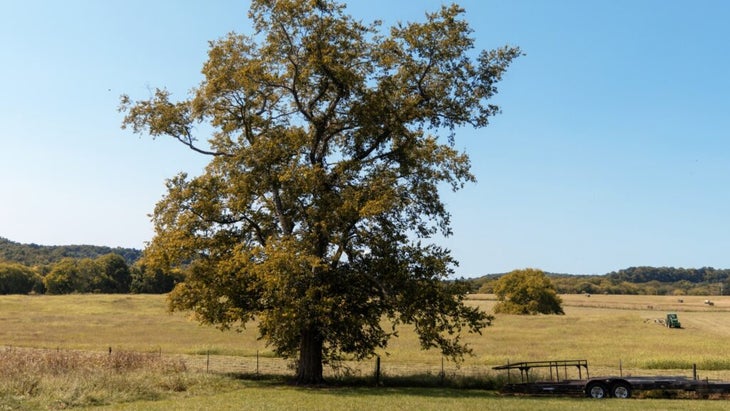
Meeting the Bear Creek Farm pigs
In all honesty, I was nervous to face the animals on Bear Creek Farm. Initially, graphic images of cows and pigs confined in filthy, crowded sheds flipped through my head as we rumbled along in the truck. But after breezing through the acres of lush green grass and open fields dotted with trees, my preconceptions melted away.
“We have an integrated water system so our animals have fresh, clean water and we grow our own hay and then mix our own feed because sometimes the kind that the stores sell have all kinds of junk in it,” LeeAnn told us. “Bear Creek Farm doesn’t use steroids or added hormones.”
As we pulled up to the pig farm, LeeAnn fretted that she didn’t have time to bathe her male boar, Wilson, and assured us he’s the most ‘handsome’ pig she’s ever owned. Wilson had just fathered a litter of 10 piglets separated in another area with their mother.
LeeAnn recalled her now deceased male pig Earl, whom she spoke of almost as a family member, to my surprise.
“He was so sweet,” she said. “I could lay down and snuggle with him. He was the other man in my life.”
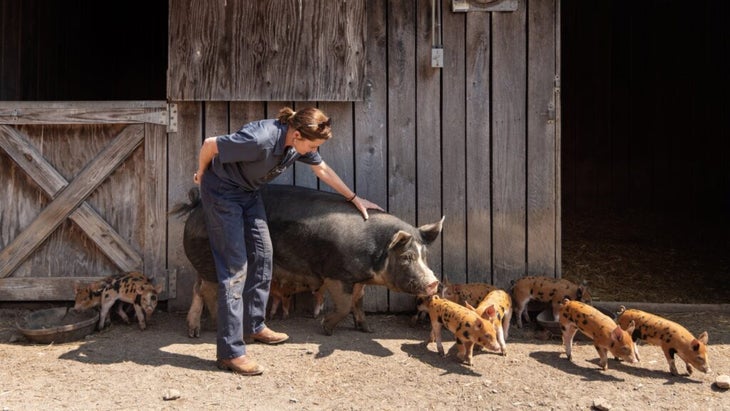
Huddled around the pig pen, LeeAnn and Bill explained how they came to own their processing plant. When Bear Creek Farm bought the functioning plant, the animals were hit with hot cattle prods to make them obey commands. The animals experienced fear, confined quarters, and cruel treatment at the end of their lives, which LeeAnn and Bill stopped immediately. While they kept most of the plant’s team, they hired meat industry consultant Erika Voogd to train them on humane handling.
“No matter what farm it comes from, once it comes to us, it’s our animal so it’s treated the way we treat animals,” LeeAnn said. “If you start wailing on an animal, it’s horrific. It’s also a risk to lose that meat and waste an animal’s life.”
In addition to being inhumane and cruel, it’s been that livestock that has been frightened or stressed before death produce less tender, flavorful meat. This is because adrenaline released by stress uses up all the animal’s glycogen and not enough lactic acid is produced, which makes the meat tough, tasteless, and more susceptible to spoiling quicker.
Meeting the Bear Creek Farm cows
After visiting the pigs, we climbed back into the truck and drove out to one of the cow pastures, where seven or eight female cows were grazing unbothered. While they do get to eat as much grass as they want, the cows were also supplemented with farm-grown grain and hay.
“So they’re not grass-fed?” I asked, recalling the endless umbrella terms stamped on meat in the grocery store.
“In this region and climate, if they were to eat grass and nothing but grass, they would eventually die,” Bill said. “They need more energy than what they can get from the grass, and would get too thin to have babies if we fed them only that.”
“It’s a real ambiguous thing right now that everyone thinks is the only way to go,” LeeAnn said. “In the state of Tennessee, as long as you have access to grass, you can put the stamp ‘grass-fed’ on it.”
Bill remarked that butchers can tell an animal has been grass fed by the size and texture of the meat. Solely grass-fed meat is often much smaller and any fat in it has an orange tint. An animal that’s been fed hearty, healthy grain has white fat. One is not necessarily better or worse than the other, if raised intentionally for its climate and region.
“There are areas in the country, mostly in the northeast, where their grasses are like rocket fuel in the summer,” Bill said. “The grass-fed cattle can grow very quickly in a short period of time because their grass is so nutritionally-dense.”
Our last stop on the farm tour was the barn where Wilson’s piglets lived with their mother. We approached the pen and peered inside as a litter of tiny trotting speckled piglets came to stick their snouts through the gates.
Having spent the entire day with them, I felt comfortable admitting to LeeAnn and Bill that I wasn’t sure what to expect when coming to the farm, but I certainly didn’t anticipate so much love for their animals.
“The feeling about them doesn’t change for me as they get older,” LeeAnn says, gesturing to the piglets. “What changes for me is the appreciation for what they’re sacrificing for us in providing for our family. But at the end of the day, we are livestock farmers.”
As I thanked LeeAnn and Billy and left Bear Creek Farm, I was overwhelmed by their efforts to provide sustainable meat to the public.
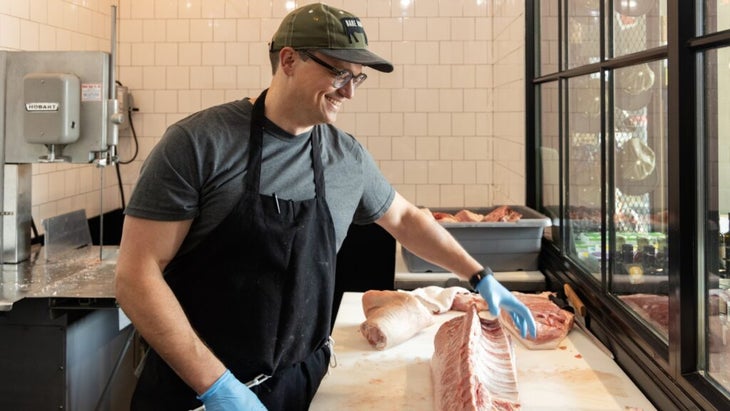
Following the meat to Bare Bones Butcher
Let me preface this installment by saying I am squeamish.
I can’t do slasher movies. The sight, sound or smell (gag) of blood makes my stomach churn. And yet, here I am huddled in this chilly, sanitized section of , watching General Manager Kyle Colvard carve half a pig right in front of me.
Bare Bones calls itself an ‘old-school’ butcher shop, serving high-quality meats from pork to beef. All Bare Bones meat is sourced from local farms, including Bear Creek Farm, where we previously toured. I admit, I became giddy when I saw the title card on a slab of beef read, “Bear Creek Farm.” There’s something about knowing where your meat comes from. I’d never experienced that before.
Kyle, friendly as can be, told me everything I wanted to know. Which, at first, was very little. I walked in thinking, ‘I don’t want to know what happens afterwards! I’m good with seeing the cows happy on the farm – I’d prefer to stay oblivious!’
“Doesn’t it bother you?” I blurted at Kyle. “How long did it take to get desensitized?”
“I don’t think I was ever sensitive to it,” he said. “I’ve worked with meat for a long time. Even when it came to carving a whole animal, it didn’t phase me. If it’s done properly and it’s done well, it’s just lean meat.”
Kyle went through the process of breaking down the half pig, which he can do in 30 to 40 minutes. It takes approximately four cuts to break down a side of a pig with four primals (a term referring to the largest subsection of an animal): shoulder, loin, side, and leg. Every butcher might have a different process, but in general, the first step is to remove the tenderloin.
“After you get the tenderloin out from here, we remove the ham,” Kyle said. “We use the ham for deli meats.”
Next, Kyle separated the ribs and belly.
“Removing the ribs from the pork belly is probably the trickiest part,” he said. “You want to leave the meat on the ribs without stealing a bunch of lean meat from the belly.”
“It’s not as gory as I thought it would be!” I said as he continued to carve. “It’s very… Exact.”
Throughout the process, Kyle sorted different cuts by name. Nearly all of the pig was used besides the glands and arteries, which were discarded. It was a part of butchering (butchery?) that I didn’t anticipate appreciating. With specialty butchers like Bare Bones, waste is taken very seriously.
For example: head cheese. Yep, that’s right. Head cheese. Contrary to its name, there is no cheese in head cheese. It’s a jellied meat made from the head of a pig. Made by grinding the meat from a hog’s head, marinating it with salt, sugar and spices, and slow cooking, head cheese typically takes the form of sausage or served as a sliced cold cut.
“We try to use the head every week, but it’s not always feasible,” Kyle said. “Utilizing everything is the hardest part for us, because we don’t want to waste anything, but some things are a hard sell. Even with our clientele, a lot of people are like ‘not a chance.’”
“It’s a grosser name than how the product actually tastes,” ���ϳԹ��� photographer Cary Norton chimed in, who got a kick out of snapping shots of my reactions.
When I was vegetarian, I might’ve seen head cheese or trotters as unnecessarily cruel or even evil. They grind up the head? They actually eat the feet!? But now, I see it as using every bit of the animal so its life is not wasted – oddly, it feels like a respectful choice.
As Kyle finished up carving the pig, Cary had an insightful comment that stuck with me.
“What you see on the farm (Bear Creek) and with Kyle is that they have a respect for the animal,” he said. “One of my favorite sayings is a Japanese phrase called itadakimasu, which is a thank you to the vegetables, the meat, the rain – it’s just a moment of respect before you consume.”
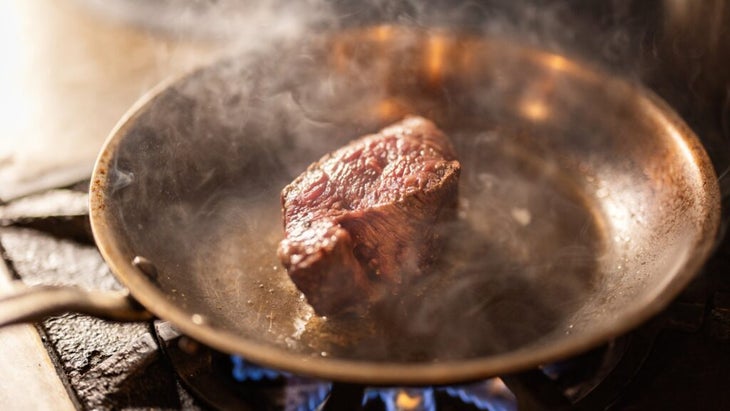
Visiting Henrietta Red for my first steak
After visiting Bare Bones Butcher, I wasn’t particularly hungry. But the minute I stepped into Nashville’s top restaurants, , I became ravenous.
The kitchen was lively and smelled heavily of fat, salt, and spices as the cooks prepped for lunch and dinner service. Chef Julia Sullivan welcomed me into the back of the bustling kitchen where she announced I would be learning how to cook a Denver cut of steak.
Thinking back to what I’d just learned at Bare Bones Butcher, three facts came into my head.
A Denver cut is:
- The fourth most tender cut on a cow.
- Incredibly marbled with tons of flavor and juices.
- Terrifying.
No. 3 is less of a fact and more of a striking feeling I got when Sullivan began her instruction, her eyes darting over at me every now and then to make sure I was picking up on her words through the clanging pots and pans.
Sullivan cooked like it was second nature, though I knew years of practice and training went into her skills. She stressed ultimate patience and told me it was essential that the steak cooked in the pan undisturbed. This allowed for an even sear around all sides of the cut. I admitted to Sullivan that I recently burned my meat and she said,
“If I overcooked a piece of meat, I would probably try to repurpose it and not serve it as a steak, but maybe cut it up and put it into a stew. Every mistake is a teaching moment.”
Well, I thought to myself. Guess I’ll be making a lot of stew over the next few months.
Sullivan then seasoned the meat with salt and pepper, then basted it with cloves of garlic and melted butter. The pan filled up with a wonderful, buttery foam until the cut was completely cooked through. I will say one thing about basting – it’s an art, and I could’ve watched Sullivan do it all day.
She took the cut out of the pan, allowed it to rest and asked me,
“You ready for this?”
Eating steak after eight long years
Sullivan expertly sliced up the steak, cutting against the grain to break up the muscle fibers and make the meat extra tender.
I nervously popped a piece in my mouth and chewed, trying not to blush while Sullivan and photographer Carey Norton watched intently.
“Oh man,” I said, shaking my head. “I’ve been doing it wrong all these years.”
Of course, I was joking, but in the moment it felt so true. The meat was tender, juicy with a hint of smoky flavor that you can only get with steak. It was an unfamiliar taste but I welcomed it, going back to the plate for more, and then some.
I used to be a cheap date since I avoided steakhouses at all costs, but now… Oh boy. Sign me up.
How my body responded to meat
After learning from my new friends at Bear Creek Farm, Bare Bones Butcher, and Henrietta Red, I was released back into the wild to apply that knowledge to my daily shopping and cooking. I had two months before the ultimate test on whether or not meat assisted my recovery: The Smoky Mountains Half Marathon.
In my training, I followed three general guidelines about meat consumption. I shopped locally, only bought what I thought I could eat, and aimed to be mindful with every meal.
While the steak I had at Henrietta Red was heavenly, I generally stuck with chicken breast and ground turkey because I found my body responded best to those protein sources. I made trips to the farmers’ market on Sundays and regularly visited a local store called The Produce Place, a natural food grocery store that shelved local vendors and farmers.
After seeing how much energy, effort, and care goes into producing sustainable meat, I only bought an amount of food I truly thought I needed in a week. Instead of buying my protein sources in bulk, I considered the quality of the meat over the quantity. I also tried to be mindful when preparing my meals. Bill and LeeAnn Cherry’s passion for their farm and respect for their animals made me slow down and enjoy my food rather than squeezing in rushed meals and eating too quickly.
It was important to me that I incorporated meat slowly and in small amounts so that my body didn’t react negatively. Sure, there might’ve been a day or two where my stomach gurgled a little more than usual, but as a whole, this method of slow and steady worked well for me and I experienced few negative reactions.
The first month of eating chicken breast about twice a week, I experienced a feeling I’d very rarely felt: Satiety. In the past, I could eat buckets of food and never feel entirely full, but after incorporating meat into my meals I felt comfortably so. After doing a little research about why this might happen, I found a showing that protein is the most filling macronutrient and changes the levels of satiety hormones, making you fuller faster.
Another change I noticed in my body was my energy levels. Over the course of the two months I was eating meat and training for my half marathon, I didn’t have any post-run crashes. I recovered better, waking up the following day less sluggish and exhausted than I would be normally.
The half marathon went great and my recovery was substantially better than usual. Post race day, I made sure to eat plenty of carbs along with chicken breast for protein. minus the fact that it poured rain the entire time. But I wasn’t daunted by the bad weather and crazy steep hills.
What do you think I am, chicken?
